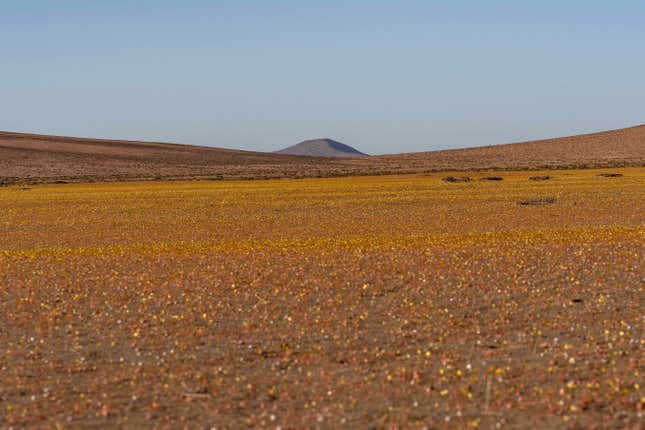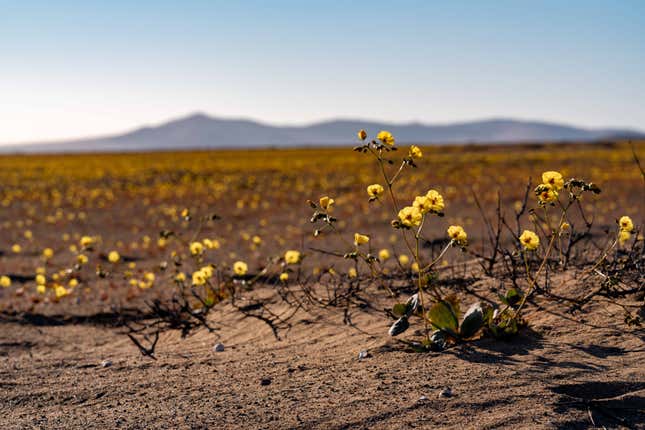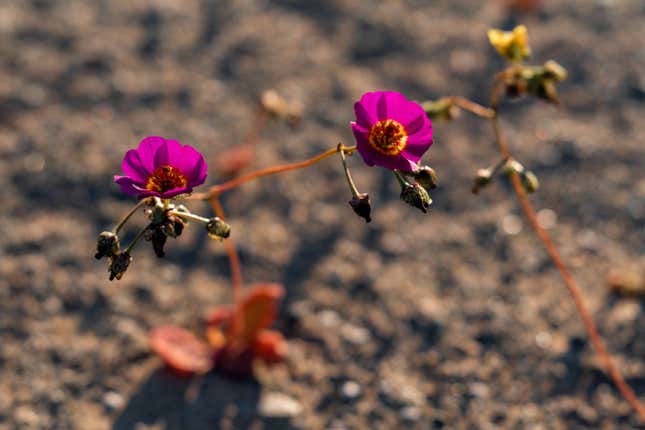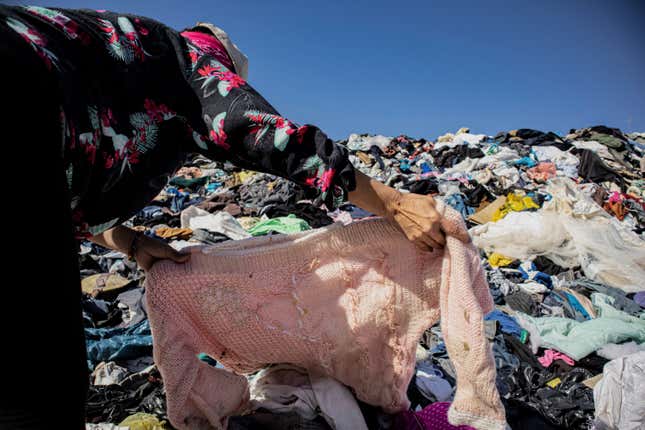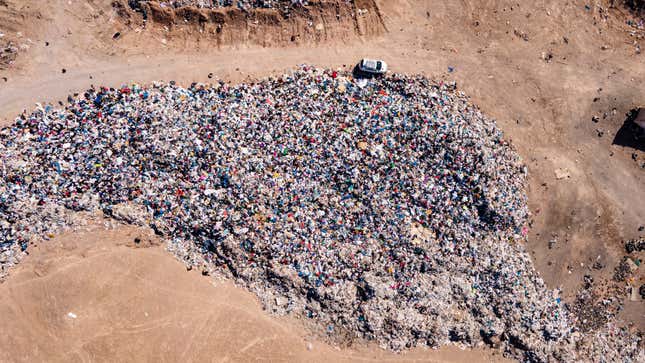Chile’s Atacama Desert is a place of surreal contradictions: Delicate flowers, blooming only once or twice a decade, suddenly cover a bone-dry landscape. Huge dunes of discarded clothing appear alongside undulating sand.
The desert is some 990 miles (1,600 kilometers) long, wedged between the Pacific Ocean and the Andes mountains. In a normal year, the Atacama gets less than 5 millimeters of rain; some parts of the desert see no rain for decades. This makes it Earth’s driest desert that’s not located in the polar regions. Conditions are so extreme that Atacama is used as a stand-in for Mars by NASA and the European Space Agency.
